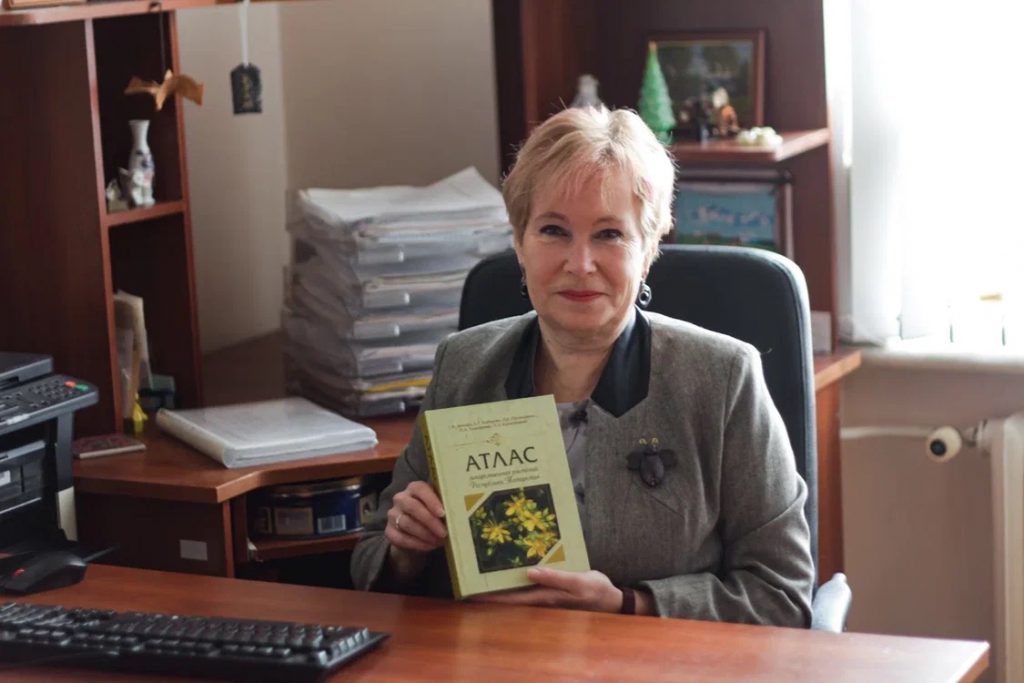Atlas of medicinal plants published by KFU scientists

The book comprises 357 species, including 5 families of vascular spore plants and 65 families of seed plants.
Among the contributors were employees of the Department of Botany and Plant Physiology, associate professors Galina Dyomina, Luiza Kadyrova, Nina Prokhorenko, and Landysh Khusnetdinova; the supervising duties were fulfilled by Professor Olga Timofeeva.
The supervisor says, “The atlas consists of five chapters. Chapter one describes landscape regions and plant diversity of Tatarstan. Chapter two explains basic recommendations on gathering and storing parts of plants. In the third chapter, a reader can find information about the phytochemical composition of local medicinal plants. Chapter four comprises morphological and biological specifics and pharmacological properties of such plants. And the final chapter is dedicated to endangered species of medicinal plants.”
For each species, the life form, morphological characteristics, flowering time, phytocenotic confinement within Tatarstan are given, and it is also indicated whether the species is included in the State Pharmacopoeia of Russia or is used only in folk medicine. In addition, the description contains information about the optimal timing of the collection of plant materials, its purpose and form of use for therapeutic purposes. Each species is illustrated with one or more photographs and a distribution map in the region.
As for the distribution of medicinal plants, Professor Timofeeva comments, “The majority are found in open spaces, such as meadows, forest glades, meadow steppes, and river valleys. The widest diversity of species is concentrated on non-agricultural territories – in ravines, on steep slopes, on flood plains, and on protected lands. The atlas shows growth maps for each species.”
The publications also includes endangered or generally low-population species which are protected by provincial or federal authorities, “For example, bedbug thyme is distributed only in the extreme southeast of Tatarstan, licorice is common only in the northeast of the region. Among the 34 species of medicinal plants that are part of the Red Data Book of the Republic of Tatarstan, three species from the Orchidaceae family (neottinea burnt, Russov’s palmate root, helmet-bearing orchis) are listed in the Red Data Book of the Russian Federation.”
The team also plans to open an electronic catalog with all the data from the atlas and invite colleagues from neighboring provinces to upload similar information about their local medicinal plants.
Further down the road, the KFU botanists plan to publish an atlas of poisonous plants of Tatarstan.

